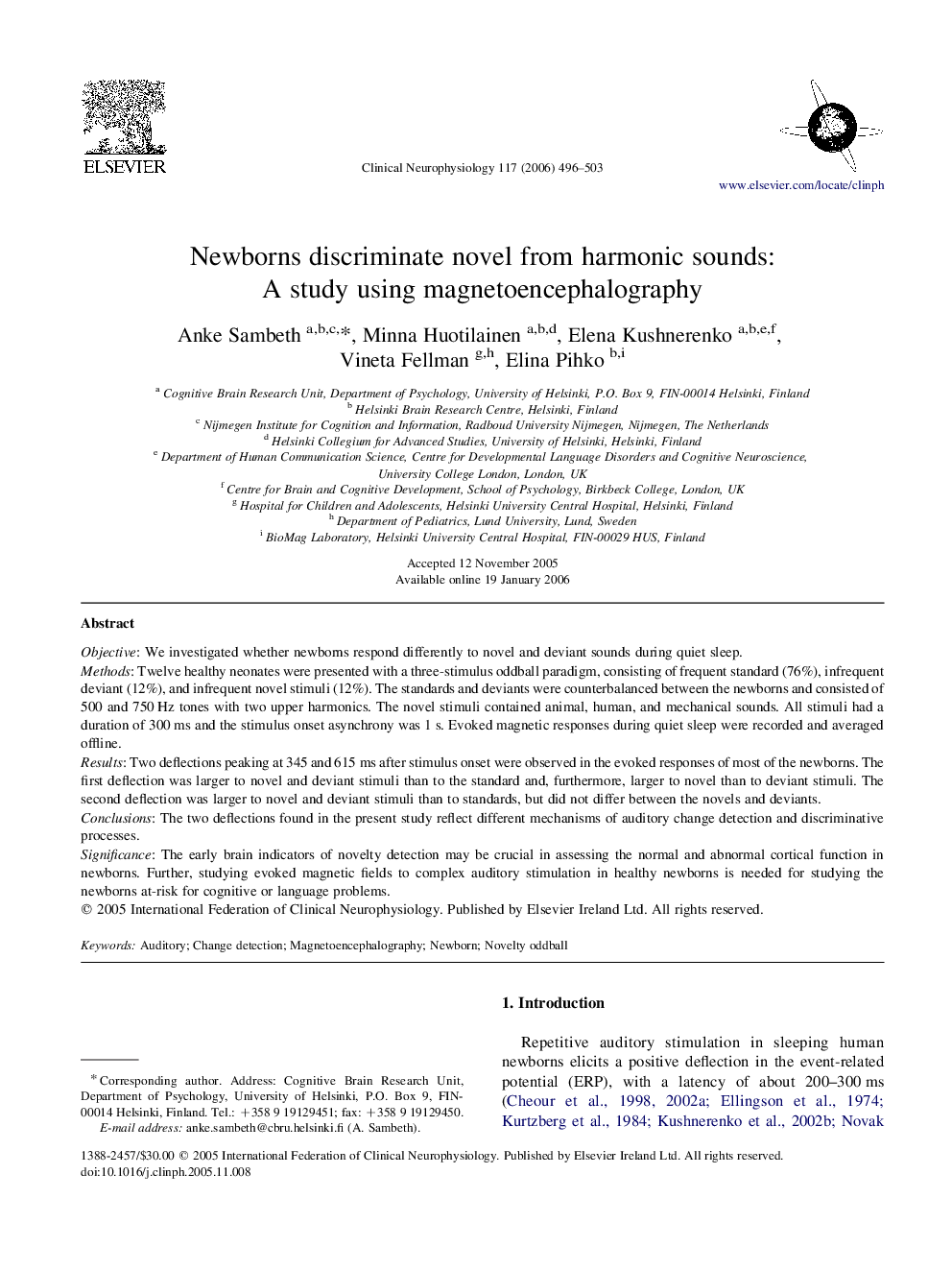| Article ID | Journal | Published Year | Pages | File Type |
|---|---|---|---|---|
| 3048420 | Clinical Neurophysiology | 2006 | 8 Pages |
ObjectiveWe investigated whether newborns respond differently to novel and deviant sounds during quiet sleep.MethodsTwelve healthy neonates were presented with a three-stimulus oddball paradigm, consisting of frequent standard (76%), infrequent deviant (12%), and infrequent novel stimuli (12%). The standards and deviants were counterbalanced between the newborns and consisted of 500 and 750 Hz tones with two upper harmonics. The novel stimuli contained animal, human, and mechanical sounds. All stimuli had a duration of 300 ms and the stimulus onset asynchrony was 1 s. Evoked magnetic responses during quiet sleep were recorded and averaged offline.ResultsTwo deflections peaking at 345 and 615 ms after stimulus onset were observed in the evoked responses of most of the newborns. The first deflection was larger to novel and deviant stimuli than to the standard and, furthermore, larger to novel than to deviant stimuli. The second deflection was larger to novel and deviant stimuli than to standards, but did not differ between the novels and deviants.ConclusionsThe two deflections found in the present study reflect different mechanisms of auditory change detection and discriminative processes.SignificanceThe early brain indicators of novelty detection may be crucial in assessing the normal and abnormal cortical function in newborns. Further, studying evoked magnetic fields to complex auditory stimulation in healthy newborns is needed for studying the newborns at-risk for cognitive or language problems.
